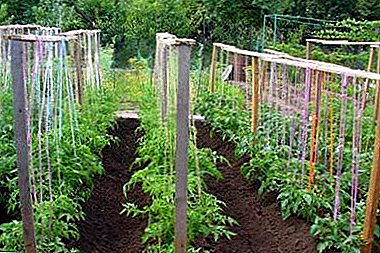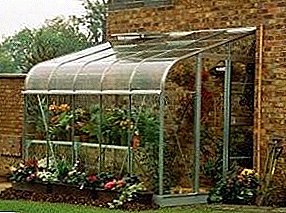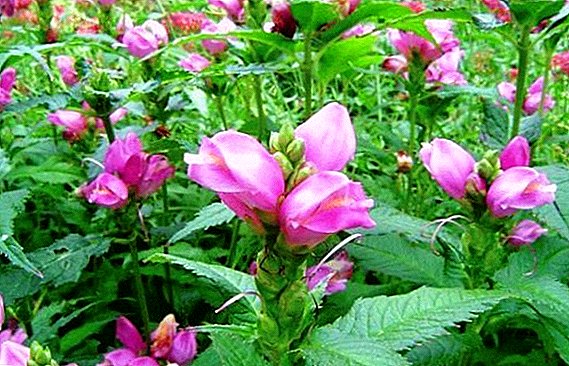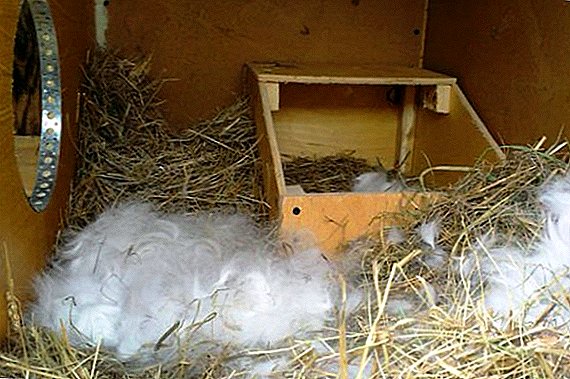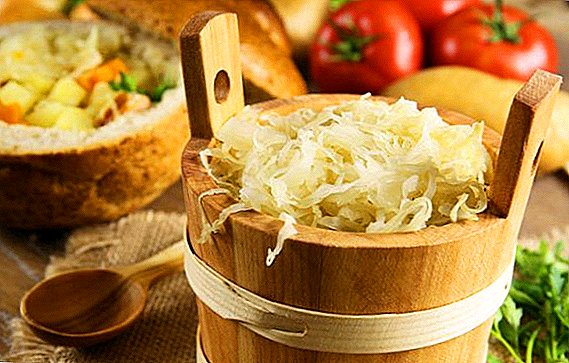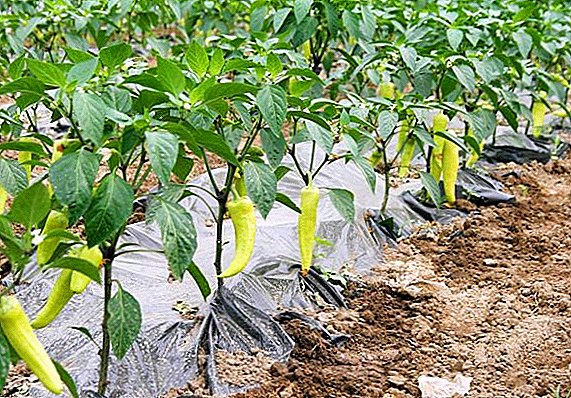 What methods do not use gardeners to grow a healthy and rich harvest in their greenhouses or on open plots! These include individual irrigation schemes, carefully selected fertilizers for regular feeding of plants, and careful protection against pests and diseases. But, in addition to these standard and proven techniques, there is another no less effective - the formation (pasynkovanie) vegetable crops. And today, the conversation will go about how to properly form a sweet summer vegetable called Bulgarian pepper, in different growing conditions.
What methods do not use gardeners to grow a healthy and rich harvest in their greenhouses or on open plots! These include individual irrigation schemes, carefully selected fertilizers for regular feeding of plants, and careful protection against pests and diseases. But, in addition to these standard and proven techniques, there is another no less effective - the formation (pasynkovanie) vegetable crops. And today, the conversation will go about how to properly form a sweet summer vegetable called Bulgarian pepper, in different growing conditions.
Destination formation
The formation of lettuce pepper bushes is a special manipulation, the result of which is aimed at obtaining the maximum yield. The procedure is performed by timely removal of excess lateral shoots from plants, in order to ensure good saturation of future pepper fruits with nutrients.
Did you know? Green, red and yellow peppers differ greatly in their composition, so much so that it is even difficult to attribute them to the same family. Green vegetable - removes excess cholesterol from the body, yellow or orange - contains a huge amount of vitamin A (more than in carrots), and red - can safely compete with citrus in the amount of vitamin C.

When need
The height of the bushes plays the most important role in the staining of Bulgarian vegetables. And, above all, for the procedure, it is tall and medium varieties that are most needed to get rid of useless shoots. It should also be borne in mind that the process of formation should be carried out only on certain varieties of pepper, regardless of where the gardener grows them (in open ground or greenhouse), these include:
- early varieties, bushes which reach technical ripeness already on the 100th day;
- medium ripening varieties (about 135 days);
- late and very late, ripening from 145 days to 160.
Check out the most popular varieties of pepper: "Bogatyr", "Gypsy F1", "Habanero", "Anastasia", "Ratunda", "Claudio F1", "Ox's ear", "Orange Miracle" and "California Miracle".

When to get by
And if tall species should undergo such a procedure, then for undersized and dwarf varieties such manipulation will be simply useless. This is due to the fact that it is the low bushes that have rather weak and fruitless shoots that do not affect the feeding of the main stem at all. So, in the case of stunted plants, it is quite possible to do without formation.
Important! Partial pasynkovanie low or dwarf bushes of pepper is carried out only in the case of a heavily thickened planting, when the plants, standing close to each other, lack the necessary solar lighting.

Stages and features
The process of forming a pepper bush in the open field or greenhouse necessarily occurs according to several rules and in stages, but the open and greenhouse options are slightly different from each other. For example, the peculiarity of growing in greenhouses is the distinctively early ripening of the first fruits, but the other conditions for proper germination must be observed.
Seedling
When growing Bulgarian pepper in greenhouse conditions, vegetable seeds in March are sown in special containers, necessarily with soil fertilized with compost, and covered with glass protection at an optimum temperature of +21 ° C. Next, the sprouted seedlings should be dived into peat pots, where the feeding and watering procedures are fully implemented at a temperature of + 18 ° C. An important point in the period of growing seedlings is providing the best possible light for 12 hours a day, if necessary, you can use special fluorescent lamps. 
After the completion of the seedling period, seedlings are transferred directly to the greenhouse, where during planting it is necessary to maintain certain distances between the bushes (40-50 cm), as the Bulgarian pepper loves free space very much.
The first steps of pinching are performed at the moment when single-stem seedlings reach about 15 centimeters in height. For such seedlings, the apical growth points are removed first of all in order to strengthen the branching and begin the correct design. 
Greenhouse
In well heated greenhouses (especially polycarbonate), as a rule, pepper bushes grow somewhat larger than in open areas, and therefore require more scrupulous and diligent formation:
- removal of lateral shoots;
- removing the flower bud (first);
- trimming the bottom sheets.

At each such fork, it is required to leave one, the strongest escape, the rest you need to pinch, not forgetting also about the removal of side shoots and buds that appeared in places of internodes. Only one fruit of pepper for proper and normal feeding should be left 2 leaves - on the main and lateral stems, thus, 1 leaf on the side branch will feed 1 fruit.
If you want to grow a really high-quality crop, find out how, when and how to feed the peppers in the greenhouse.After the implementation of the proposed scheme, which, according to many agronomists, is more successful, the bush will develop well and give a good harvest it is only necessary to perform periodic inspections of the plant and timely get rid of fruitless shoots and always leaves with side shoots, which usually grow below the beginning of the branching of the main stem.
The next step of hiding in greenhouse conditions will be getting rid of the crown (flower bud), as the fruit, which ripens at the fork, provokes the production of inhibitor substances by the plant. And then you can forget about strong, juicy and large fruits.  By the very end of the growing season, in about a month, it is desirable to manipulate the removal of the tips on the shoots, but leave the ovary at the same time - this will have a beneficial effect on the acceleration of pepper growing and the increase in fruiting, as well as suspend the growth of the bush. Leaves, buds, empty shoots and flowers, which are located on the forks of the main stems, should be removed every three days.
By the very end of the growing season, in about a month, it is desirable to manipulate the removal of the tips on the shoots, but leave the ovary at the same time - this will have a beneficial effect on the acceleration of pepper growing and the increase in fruiting, as well as suspend the growth of the bush. Leaves, buds, empty shoots and flowers, which are located on the forks of the main stems, should be removed every three days.
Important! Before starting the planned pinching, one should make sure that the garden implements are clean to prevent various garden diseases, as well as the absolute health of the cultivated crop.

Open ground
The first step in the formation of pepper bushes in the open field, first of all, is the removal of the crown bud, this will serve the best growth and development of the chosen culture. Then pasynkovany carried out in this order:
- Pruning extra shoots. After some time, leaves appear on the peppers planted in the open area, and as soon as their number reaches 10, unnecessary branches should be removed from the plants, leaving 2-3 good shoots.
- Weak shoots must be removed by removing the apical points.
- Shoots that are higher than the first leaf should be pinched off.
Read how to care for pepper after planting in open ground.The above scheme should be repeated when branching a formed bush, because, if you do not continue to remove extra shoots, the bush will significantly weaken and will not bring the expected results, in this case - good fruits. Further, such work is done: the flower buds formed at the internodes should also be removed, as well as the fruitless, empty processes that can be seen near the beginning of the branching of the main stem.

Tips and tricks
With timely pinching of peppers in a greenhouse or open field, it will not be superfluous to listen to some popular tips which accumulate in experienced gardeners throughout their lives:
- If at the first stages not one but several coronary buds appear on the seedlings, they should also be completely removed, after which the bushes will develop much better.
- The vegetable shrub, which is grown in a well-heated greenhouse, has a longer growing season, which means that it is necessary to cut on it the sheets that grow on the main stem. Also, the sick and injured are necessarily removed;
- The most recent cutting of unwanted leaves should be done about 45 days before the final crop ripens, after which the bushes should be left alone.

To better consolidate the knowledge gained from this material, it is also recommended to familiarize yourself with helpful videos which are devoted to the schemes of proper formation of pepper bushes:
- //www.youtube.com/watch?v=e0FW-Ty-_UA
- //www.youtube.com/watch?v=78qAelcIUsA
- //www.youtube.com/watch?v=cNZRj_1mhs4
Did you know? Conducted in Kansas State University, studies have shown that pepper with regular consumption can reduce the likelihood of cancer in active and passive smokers.Now, when you already know how to correctly peacock peppers in greenhouses or in open areas, you can safely proceed to the proper and full-fledged growth of salad vegetables, without fear of the future fruitful result.



